Fluxor is a future (2040) transportation system, aim at balancing regional development inequalities of the Yangtze River Delta and bring more energy by trigger demands.
Contents
🏙️ Chapter1 Suburban Life in 2019
When we think of Shanghai, what is the picture that emerges in the brain? I believe everyone’s first impression is similar to this picture – prosperous skyscrapers. But for most Shanghai residents, it’s actually the picture below. It’s a more deserted suburban scene.
Let’s take a look at the comparison between the city center and the suburbs. There are about 7 million people in the center of Shanghai, while there are 16 million people in the suburb, which is about 2.4 times that of the residents of the city center. This is why we said earlier that more Shanghai residents saw such a picture of Shanghai. We put our perspective on a larger area, with a population of 150 million throughout the Yangtze River Delta. So we need to pay attention to the majority of the people who now live in the suburb, to see their lives.
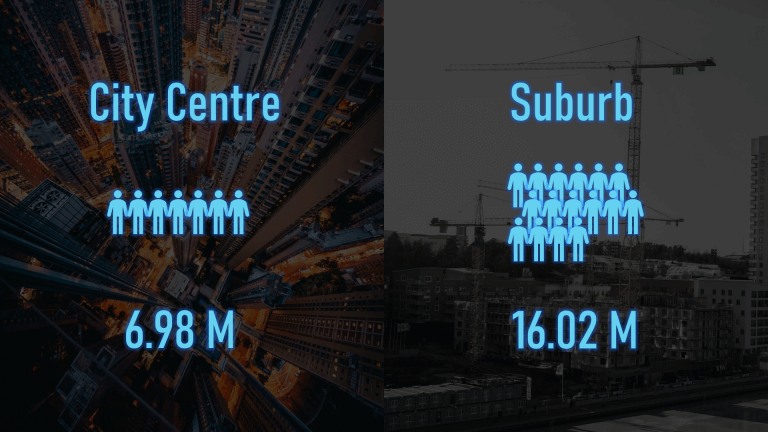
Comparison of the population in the city center and suburb
We can see that most of the buildings in the suburb are the same houses with many construction sites. People go to work downtown after a long and tedious commuting every day. When people got home, there were only a few monotonous food stores nearby. There is no entertainment place around at night. So they can only watch the play at home for entertainment. There are no social clubs and no social activities in the suburb.
Also, living in the city, why are Suburbans’live so boring? What do Suburbans actually need?
✨ Chapter2 Demand
We analyze people’s demands and build a DEMAND TRIANGLE. From bottom to top, the first layer is the physiological demand such as food, water, sleep. The second layer is the safety demand such as medical treatment and employment, the third is to play games, watch movies, and other entertainment demand, the fourth is the social demand to interact with others, and the fifth is the highest level of self-actualization. In this demand triangle, We call demand at the bottom two levels as the basic demand. The top three layers are advanced demand.
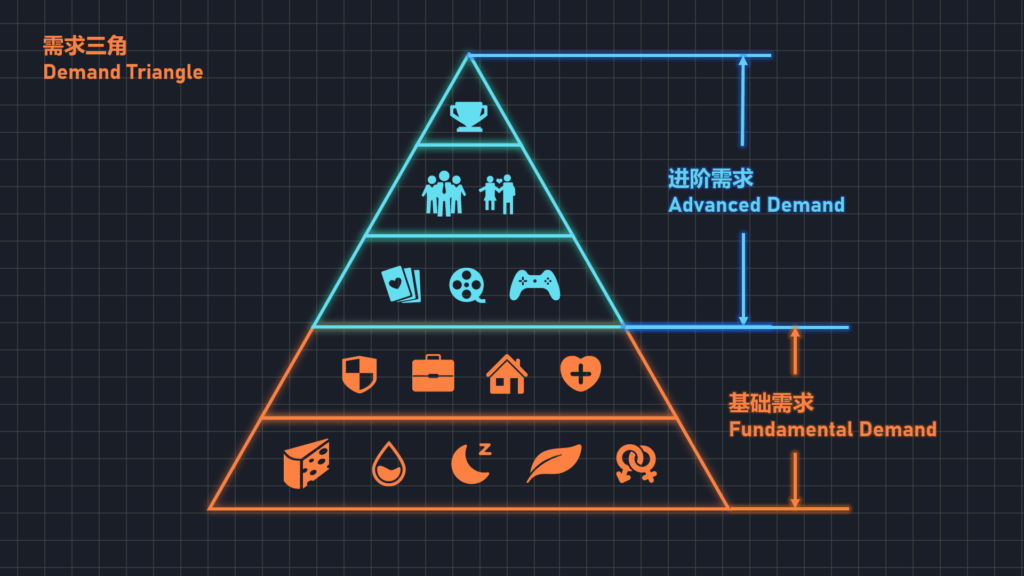
Demand Triangle
After analyzing the demand of the individual, let’s go back to the point of view of the city, the urban function of the city center covers all the demand more or less, but the urban function of the suburbs only meets the basic demand of the residents, but can not satisfy the advanced demand. For more residents to live a better life, we need to transfer some of the functions of the center to the suburbs. We call this “ON-DEMAND” mode.
From a personal point of view, ON-DEMAND mode is, the service will come to you and carried with what you want. However, we think that the future can not just stop at the ON-DEMAND mode, but have to attain a new mode, which we call, TRIGGER-DEMAND mode. This means that the services not only give users what they want but also something unexpected to stimulate new demand.

ON-DEMAND & TRIGGER-DEMAND
We can look at it on the Kano model. If you failed in ON-DEMAND, users will be very dissatisfied; however, even if you fulfilled ON-DEMAND, users may not be satisfied either. In contrast, if TRIGGER-DEMAND is implemented, which means users’ potential & unexpected demand is aroused, it is likely to produce the highest level of satisfaction.
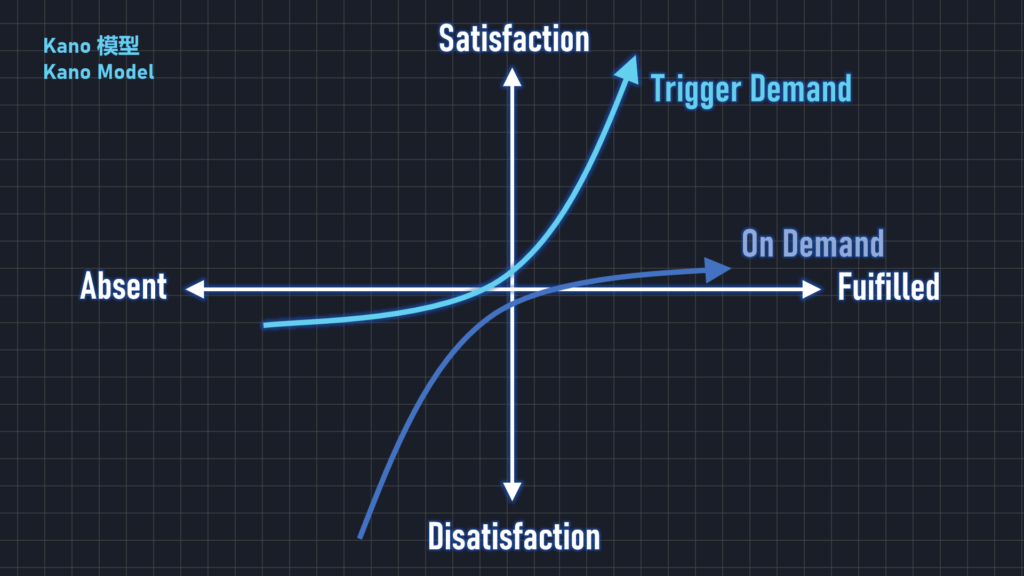
Kano Model
That’s why the system should go further from ON DEMAND to TRIGGER DEMAND. That is, the service can not only follow the demand of the users but with a certain degree of initiative, to actively move to the perspective of the users, trigger their demand, then activate the entire Yangtze River Delta. In this way, TRIGGER DEMAND will better at serving the citizens.
So, how do our services implement TRIGGER DEMAND?
🚌 Chapter3 Fluxor
Next, we introduce the system we designed, FLUXOR. This is a vehicle of the future, which apparently has some space to move. It’s equipped with a variety of services, which can flow across communities. And a lot of FLUXORS are linked and combined through intelligent networking so that they adaptively change the ecosystem of the city. Driven by the Big Data Cloud, the vehicles with services are flexible in serving different parts of the city at different times, bringing vitality to a wider range of city areas, suburbs, and even to the whole Yangtze River Delta.
Back to the beginning of the DEMAND TRIANGLE. From this triangle, we analyze the 4 future forms of business modes, that is: Store & Manufacturers / Public Institutions / Virtual Service Provider / Creative Producer . Here are the system maps of these business modes. Corresponding to these 4 kinds of business modes, 4 service scenarios are built:
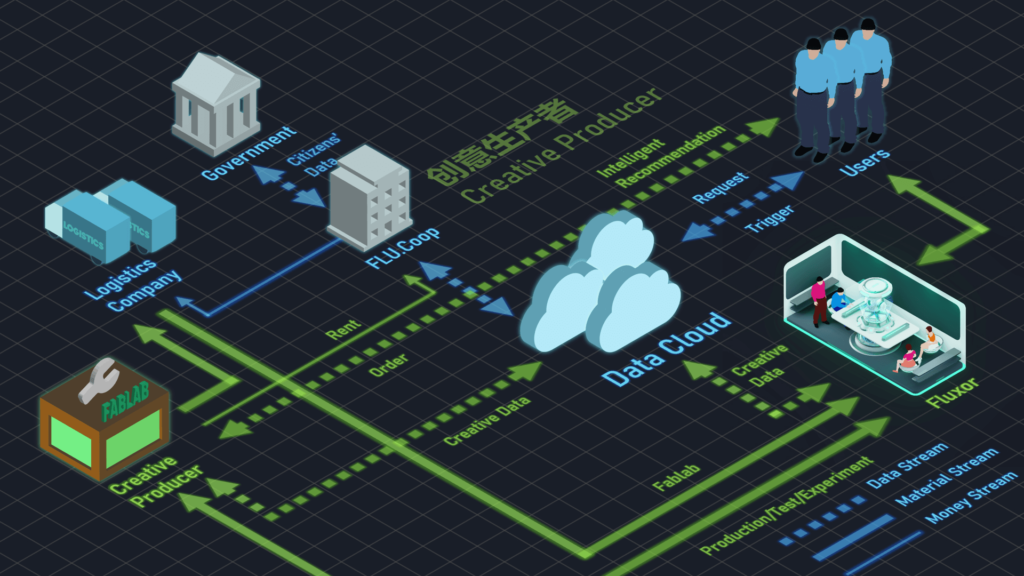
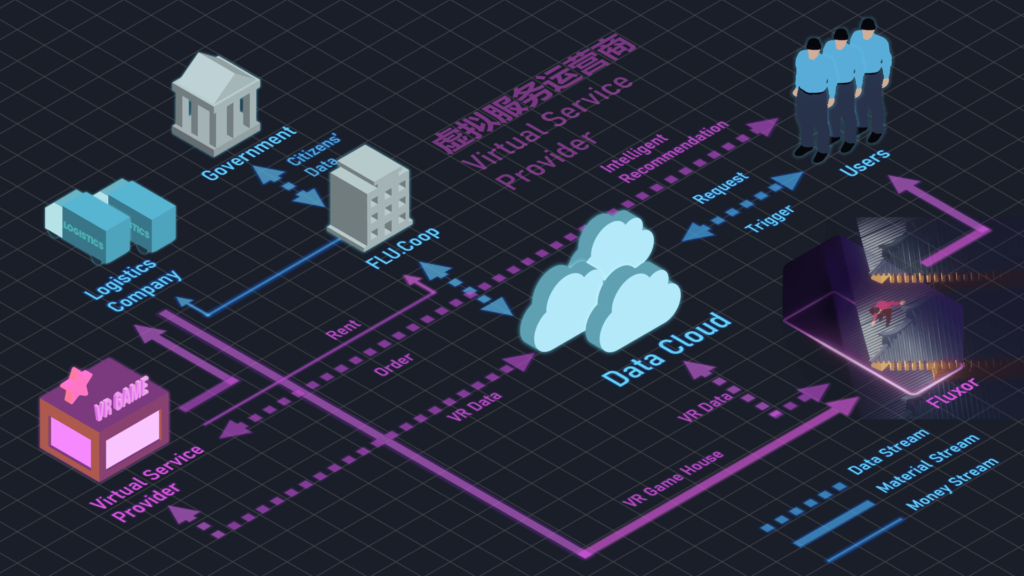
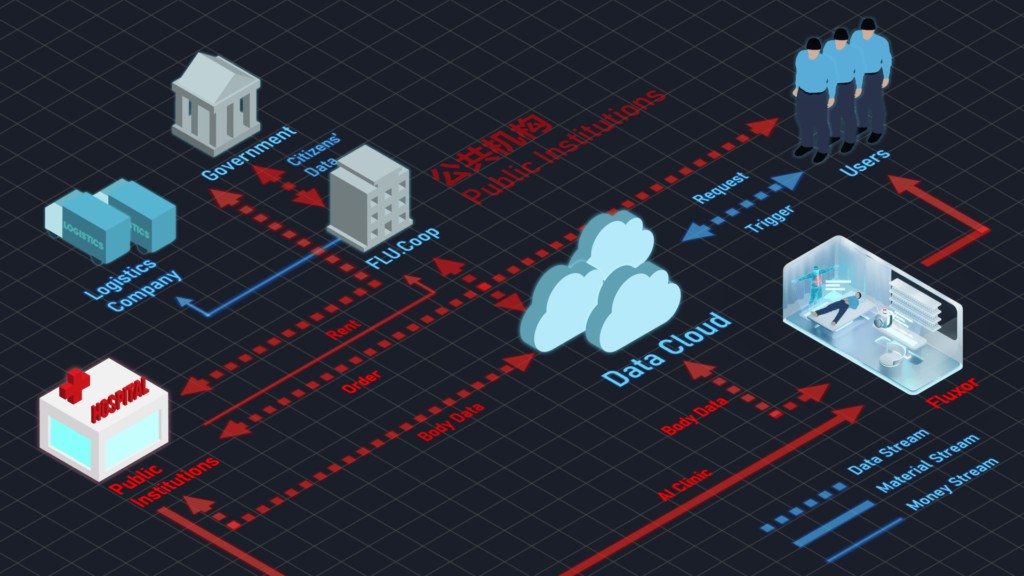
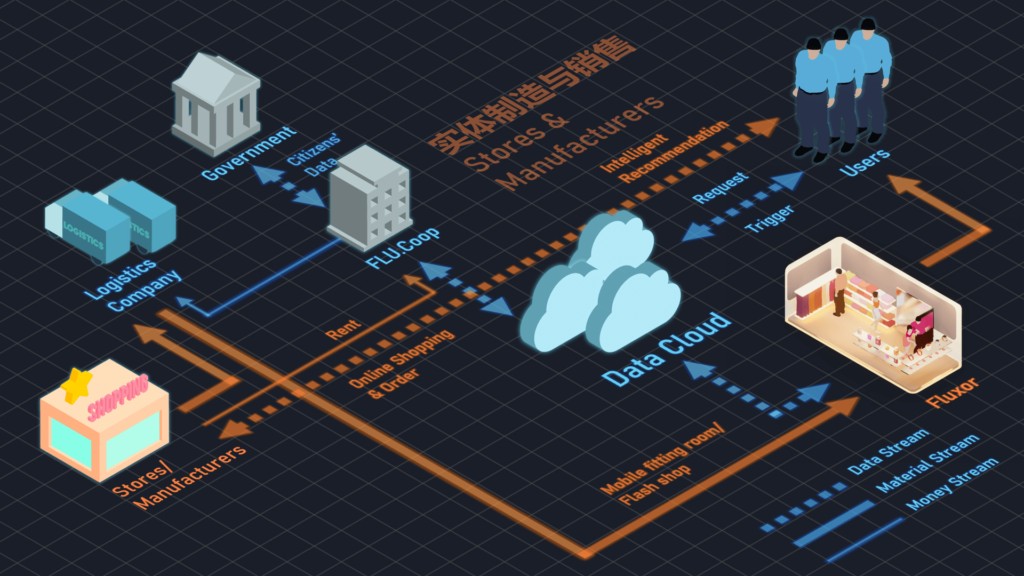
🏪 Mobile flash store
People are looking at newly coming goods, of different brands near their families. Here in the picture, there are clothes, perfume, and watches.
💊 AI clinic
The man is doing a medical examination. Since a fluxor comes near his home with an intelligent robot, he no longer has to go to the hospitals in the city center and waiting for the doctors.
👾 Multiplayer VR gaming room
The boys occasionally find this VR experience and start an adventure together, getting a lot of fun.
🔬 Co-creation laboratory
People with good ideas and professional abilities can get together and make something cooperatively, get a sense of self-actualization.
朋友你好!
看到你的作品感觉很用心,严谨且话题也很贴近愈来愈近的未来,我目前在读偏服务设计的研究生,不知道能否跟你沟通一二?期待得到你的回复,我的微信是1074325792,邮箱是hejunyu1997@gmail.com
谢谢!